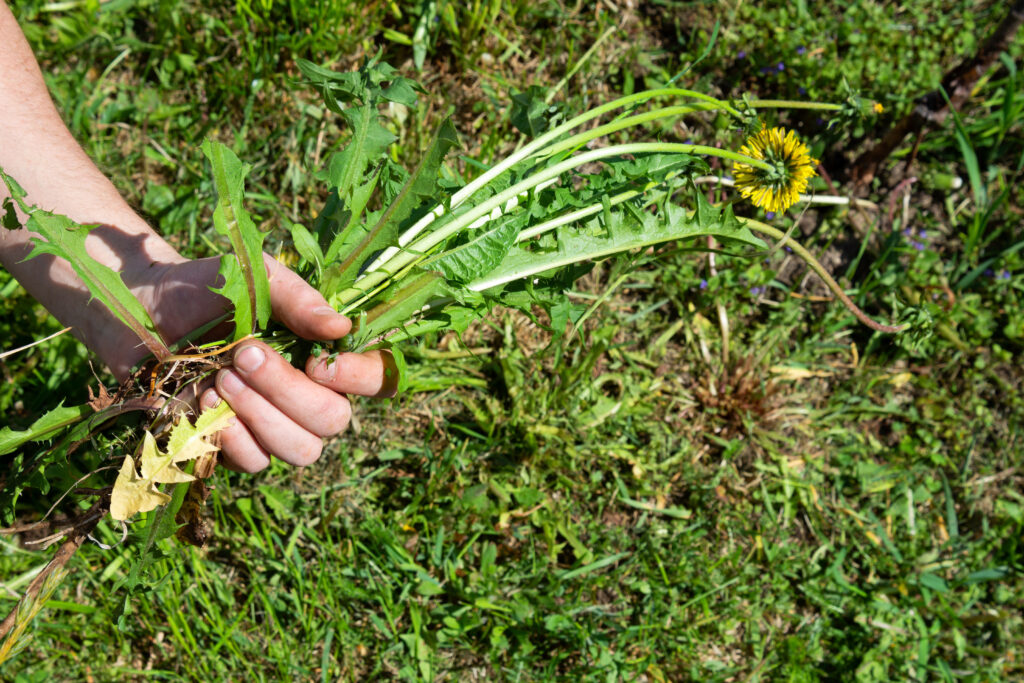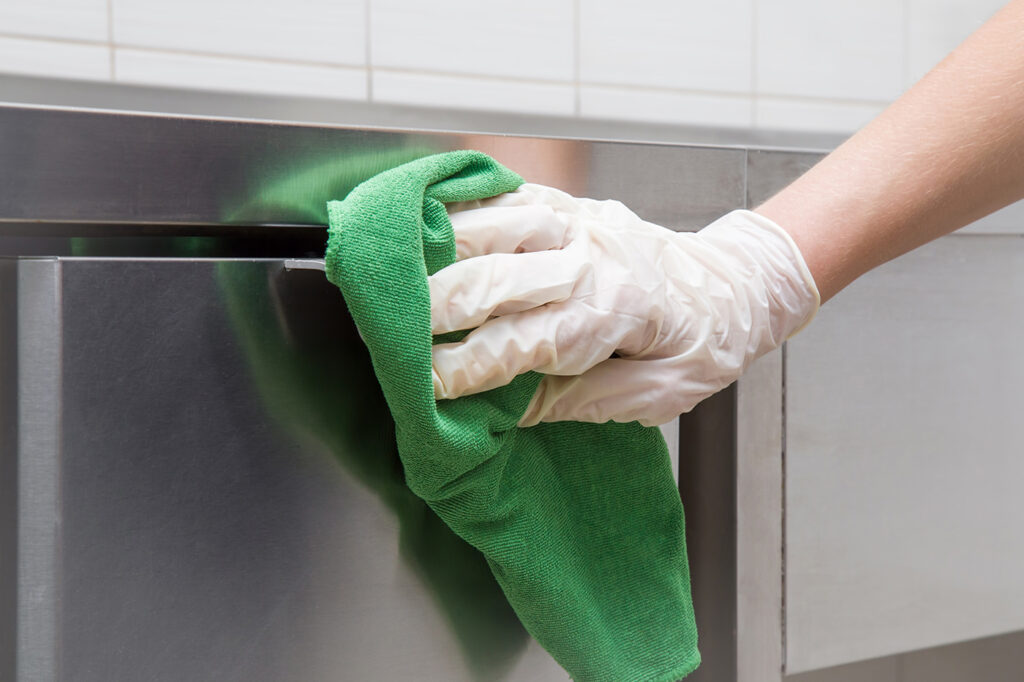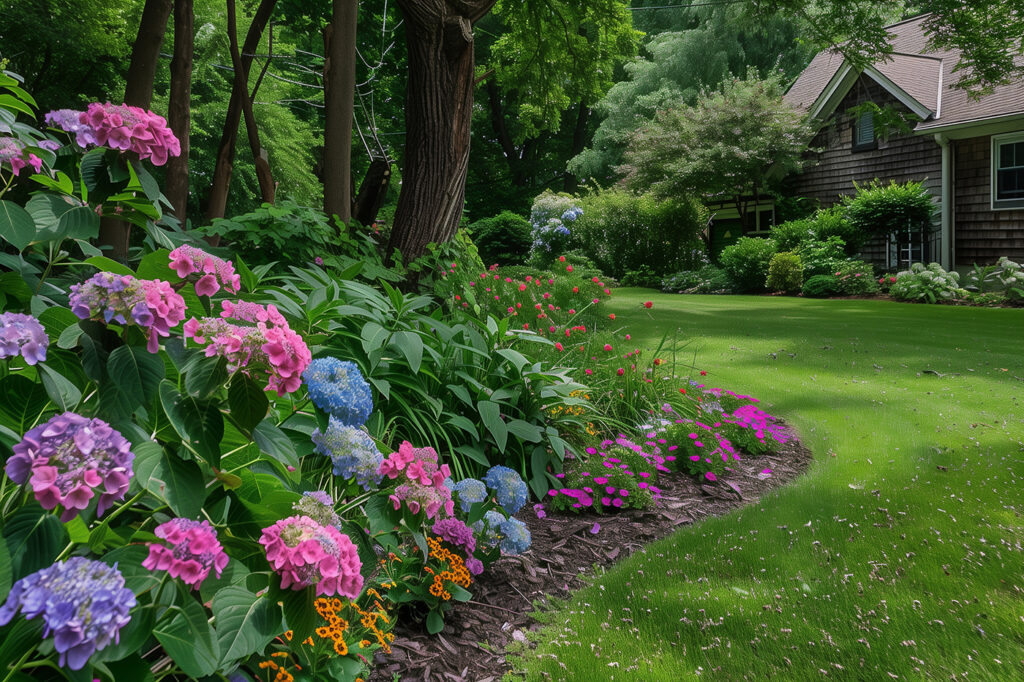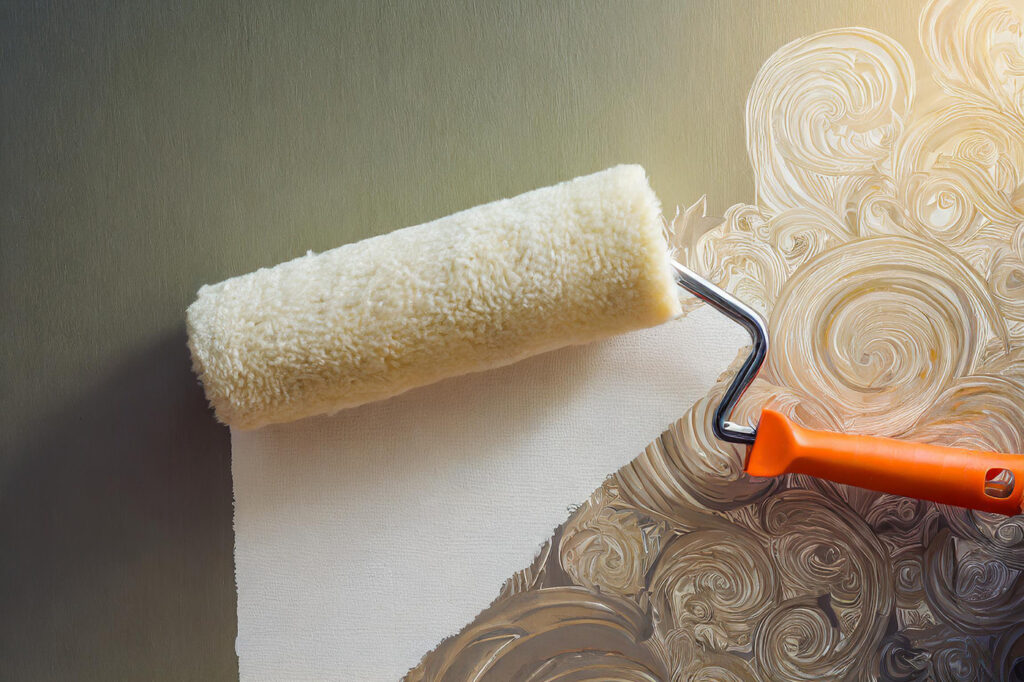Nothing beats a lush, green lawn, but when weeds start to take over, it can be frustrating. Weeds love the same conditions that your lawn does, and they thrive when the grass is cut too short or the soil is neglected. In this article, we’ll explore several methods for killing weeds without harming your grass. And if spending a weekend doing lawn work isn’t your idea of fun, don’t worry! You can always book a Tasker to take care of the weed removal for you. Taskers know the best tactics for removing all types of weeds, so you can enjoy your beautiful lawn without the hassle.
Tools And Products
Ready to tackle those pesky weeds? Below are some of the tools and products you’ll need to get started.
- Lawn mower with adjustable height settings
- Rubber gloves
- Vinegar
- Spray bottle
- DIY soil test kit
- Dandelion digger
- Sickle blade
- Dutch or push hoe
- Corn gluten weed killer
- Acetic acid
- Flame weeder
- Tea kettle
- Dial sprayer
- Fertilizer spreader
- Safety glasses
- Pressure sprayer
- Tank sprayer
- Non-selective plant herbicide
- Pre-emergence crabgrass killer
- Postemergence crabgrass killer
- Lawn aerator
How To Remove Weeds From Lawn
Now that you know some of the tools to tackle weeds, follow these steps to effectively remove them.
1. Care for Your Lawn
The first step to eliminating weeds is maintaining a healthy lawn. Thick grass chokes out weeds, which is why regularly applying organic lawn fertilizer is essential to eliminating weeds. Fertilizer is typically applied in the fall and/or spring, depending on your lawn’s grass type. Also be sure to re-turf or re-seed any bare spots in your lawn in spring and autumn.
Regularly watering your lawn can also aid thick grass growth. Lawns typically need around an inch and a half of water per week, but varies on your climate and grass seed. Watering your lawn can be accomplished either manually with a hose, or by installing an underground irrigation system. By establishing deep roots, grass can better compete against weeds.
If you find yourself with a major weed problem, the soil could be the issue. Using a DIY test kit or by getting help from a professional, test your soil’s pH and adjust accordingly. Common treatments include spreading organic compost or treating the soil with lime to decrease its pH.
Cutting your grass too short can also adversely affect the amount of weeds, making it easier for weeds to grow. This is why you should never cut grass more than one-third of its height. Lastly, install landscape fabric in plant beds and mulch around trees to suffocate weed growth in places outside of grassy areas.
2. Identify the Type of Weed
Even if you’re doing everything right to care for your lawn, weeds can still sneak in. To tackle them effectively, you’ll need to identify the types of weeds you’re dealing with. See below for a breakdown:
- Broadleaf weed: Leaves on broadleaf weeds are broad and flat. Common varieties include dandelions, clover, Creeping Charlie, ground ivy, oxalis, chickweed, thistle, dollarweed, knotweed, and plantain.
- Grassy weed: Some weeds look like grass and grow in blades. These weeds include crabgrass, foxtail, annual bluegrass, and quackgrass.
- Grass-like weed: Another weed that looks similar to grass but grows in hollow and tube-like shapes are grass-like weeds including nut sedge, wild onion, and wild garlic.
Make sure you know what type of weed you’re dealing with before you move forward. Different products are designed to tackle different kinds of weeds.
3. Choose the Weed Treatment
Now you know the type of weed you’re dealing with, there are two options for method of removal: natural or chemical. Natural weed removing is more eco-friendly and promotes healthier soil. It’s also safe for humans and pests and is generally more cost effective than herbicides. However, chemical treatments are a highly effective method to take care of weeds once and for all during a growing season. Let’s break down both options below.
How to Get Rid of Weeds in Grass Naturally
The best way to remove weeds is to use your hands or lawn tools. Some garden tools dig weeds by the root, such as a dandelion digger or sickle blade. Alternatively, hoeing plant beds with a dutch or push hoe can effectively remove weeds.
Outside of manually removing weeds, there are organic herbicides. However these can still harm grass too, so read labels carefully. Most are sold in spray bottles for easy control. Natural weed killers include corn gluten, which stops crabgrass and other lawn weeds from taking root, or acetic acid (otherwise known as horticultural white vinegar) that kills weeds both quickly and naturally. Acetic acid kills only the part of the weed it touches. Be sure to wear safety gear and goggles as acetic acid can burn your skin.
Another method to naturally remove weeds is with a flame weeder, which is a wand connected to a propane tank. Flaming is a targeted approach to killing weeds but note it only kills weeds above the ground and doesn’t tackle weed roots. Therefore you may need to reflame several times to rid the area of weeds. Be sure to avoid this method during dry seasons or a drought.
Boiling water is another natural weed killing method. Simply boil water and pour it on the weeds. This method works great for weeds growing in gravel or between stones. Alternatively, if you don’t mind weeds that flower in your lawn but don’t want the weed to spread through self-seeding, deadhead them so they don’t get the opportunity to produce or spread weed seeds.
Some other homemade weed killer methods include dish soap, epsom salt, or apple cider vinegar. If you want to know what kills weeds permanently naturally, look no further than vinegar. Simply put vinegar in a spray bottle or pump spray and spread it directly on the plant. Note this method can’t differentiate between grass and weeds so only spray the vinegar mixture on weeds so as to not harm any grass.
Herbicides
If you have a major weed problem on your hands, herbicides can be an efficient weed removal method.
There are a variety of products you can buy. To spot-kill broadleaf weeds, spot-treat the weeds with a broadleaf weed killer herbicide in a small, trigger-controlled, pump-up pressure sprayer. A tank sprayer best handles clumps of weeds. If broadleaf weeds have covered your entire lawn, use a dial sprayer to kill weeds over a wide area but be sure to clear your lawn of any toys or furniture that can get contaminated by overspray. Be sure to avoid flower beds as broadleaf killers will kill or harm any plant with leaves.
To kill perennial grassy weeds, use a non-selective plant killer. Dip a glove into the solution and coat the weeds with it. Rubber gloves are the best choice for this job, as they provide better protection than cloth gloves.
Crab grass is one of the hardest weeds to tackle. To control it, apply a crabgrass preventer in the spring between the first and third mowings. Pre-emergent crabgrass killer typically comes as granules you put on the lawn with a spreader. Make notes in the fall about where crabgrass seems to thrive in your lawn, and focus on those areas in the spring.
Once crabgrass has taken root however, you have three options. Hand pull the clumps yourself, let the crab grass go until next spring then use a preventer at the right time, or treat clumps with a postemergence crabgrass killer.
How to Prevent Weeds from Growing
When tackling weed removal, follow the below tips to prevent weeds from growing.
- Treat gravel areas and cracks in walkways or driveways during the same time you treat your lawn. This will prevent any seeds from blowing into your lawn and growing.
- Thoroughly read herbicide instructions before you begin. It’s essential to follow and apply the product correctly for safe and effective results.
- Also read the label to determine how simple the herbicide is to apply. Some herbicides may need to be applied more than once. Ready-to-use sprays are the easiest option.
- If moss is a problem, only use products containing mosskiller.
- Avoid applying weed killer within six months of sowing or laying lawn turf. However, products that contain fluroxypyr are claimed to be safe to apply after two months if the new grass is growing well.
- When applying weed control in the summer, treat the weeds in mornings or evenings to avoid the hot sun from scorching the surrounding areas in your lawn.
- During a drought, it’s best to avoid applying herbicides, as your lawn is already stressed and may not be able to handle the additional strain.
- Weeds expand their root system underground in the fall. Controlling weeds in the autumn reduces germinating and competition in the spring.
Weed Removal Help
Now you know how to kill weeds, keep in mind not all weeds are bad! Some actually help pollinate and increase biodiversity. So, if a few dandelions pop up in your yard, they might be doing some good. However, some weeds can be a real nuisance and harm your plants. In that case, it’s best to tackle the issue sooner rather than later, before the weeds can spread. If you’re not keen on doing the hard work under the hot summer sun or don’t have the right tools, consider getting help from a weed removal service. Taskers offer affordable lawn care services, including gardening work, weed removal, tree and shrub transplanting, and more! With the weeds gone, you can even start your own garden with the help of your local neighborhood Tasker. To get started, simply connect with a qualified Tasker in a matter of minutes.















